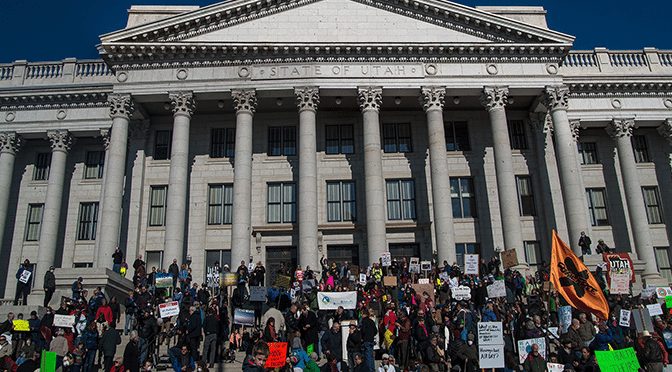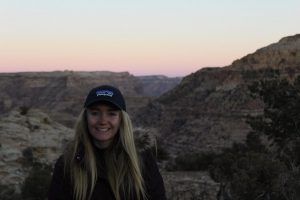We all know what winter in Utah is like. Crowds will travel from all over to see the lights at Temple Square, thousands of skiers flock to experience the best snow on Earth, and we all get to experience our favorite thing about Utah—never ending smoggy air. With Salt Lake City’s ever growing population projected to double by 2050, it seems that the air quality is only getting worse from here on out.
According to a study conducted by the American Lung Association, Salt Lake City ranked as the 7th most polluted city in the nation in 2015. The same study gave a letter grade to every state based on the quality of their air, where Salt Lake received an F. This is because every year there is a substantial increase in the number of bad quality air days with short term particle pollution, which is a mixture of primary particles like dust, volatile organic compounds, and emissions and their reaction in the atmosphere. We Utahns definitely have experienced this, and unfortunately not just during the winter time. If you’ve ever been on the top of one of our many mountain peaks and realized you couldn’t really see the city clearly, then you know what I’m talking about.
HEAL, which stands for Healthy Environmental Alliance of Utah, is a group here in Salt Lake City that advocates for clean air and renewable energy sources, and helps to protect Utah from nuclear and toxic air hazards. HEAL originated from another group called Families Against Incinerator Risk (FAIR), a grassroots organization that started in the ‘90s, aimed at stopping the Army from incinerating toxic weapons in Tooele. FAIR was worried about the downwind effect that surrounding communities might face from nuclear and toxic threats being introduced to their environment.
Sitting down with Noah Miterko, a grassroots organizer at HEAL, I got to learn what this organization was all about.
“When HEAL is working on something, we try to work on the grassroots and advocacy side, you know, getting people involved, connecting concerned communities and individuals with the tools and education they need to make a difference,” he said. “It’s important and people really care about this. People get sick from the air quality here, or people even move away because of it. It really blindsides people, I think, who move here from out of town. They think, Salt Lake City: beautiful mountains, the Olympics; it must be super clean. But then they get here, and well, not so much.”
HEAL works to help preserve Utah air by advocating about hot topic issues, educating the public, helping to enact different policies and bills by working with regulatory agencies, and also by encouraging the public to participate in citizen lobbying.
While there are many small ways for individuals to improve Utah’s air quality, such as biking to school and work, switching to renewable energy sources, and being more pollution conscious, the solution to Utah’s air is also tied to legislative work.
“One of the most effective things you can do as a resident is speak to your representatives, speak to your senator, and speak to your city councilperson,“ Miterko says.
University of Utah students, and other community members, interested in clean air or sustainability can find many ways to get involved with HEAL. This upcoming winter they will be holding meetings during the legislative previews, and teaching people how to citizen lobby. In addition, HEAL also hires students for prestigious internships during the spring, summer, and fall. Students involved in these internships work closely with HEAL on research projects relating to Utah air. Anyone interested can contact Noah Miterko at [email protected].
As a lover of the Utah outdoors, I am grateful to organizations like HEAL that are actively working on helping to clean the air, so that I can hopefully one day breathe without wheezing when I go for an outdoor run in our not-always-so-clear Utah air.
Photo courtesy of HEAL Utah.



